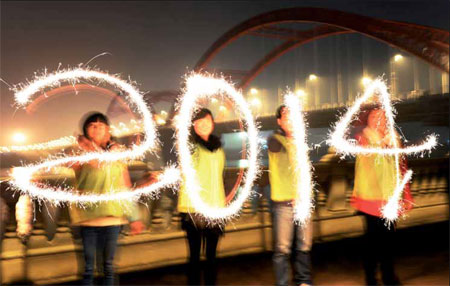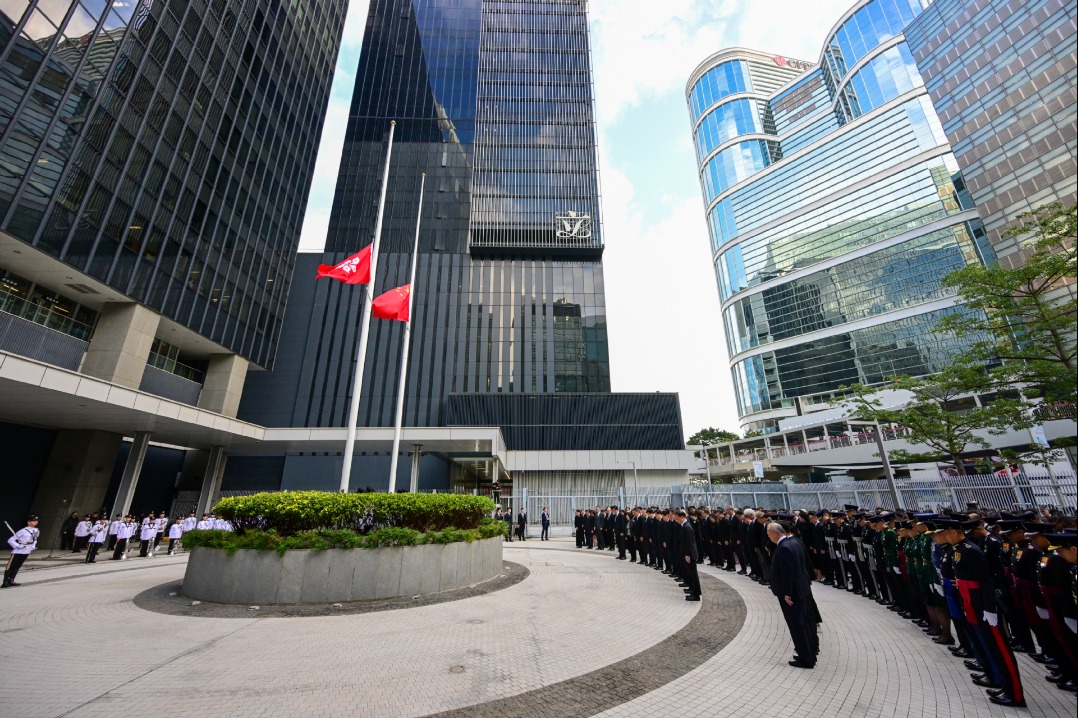IN BRIEF (Page 2)

Policy
Xi to oversee reform implementation
Top leader Xi Jinping will head a group to steer economic, social and Party reforms, underscoring the country's determination to push through change amid resistance from vested interests.
China's top ruling body, the Political Bureau of the Communist Party of China Central Committee, decided to set up the group to lead overall reforms and appointed Xi as its leader at its meeting on Dec 30.
The group, which is expected to carry out the country's boldest reforms in more than three decades, is being positioned at the highest level, showing the leadership's resolve to smash the shackles of vested interests, analysts said.
But speculation has swirled around how these reforms many of which touch on the country's most complicated issues, such as the family planning policy, separating grassroots courts from local governments and improving Party anti-graft measures would be carried out in the face of resistance from local governments.
Diplomacy
Japan's leader not welcome
Beijing has declared Japanese Prime Minister Shinzo Abe "not welcome" by the Chinese people and said Chinese leaders will not meet him.
It is China's toughest stance since tensions flared last year between the Asian powerhouses over China's Diaoyu Islands.
Analysts said Abe must apologize for his visit to a shrine honoring war criminals and promise not to visit it again if he really wants to mend ties with Japan's neighbors.
"It is Abe who has shut the door on talks with Chinese leaders," Foreign Ministry spokesman Qin Gang said at a news briefing on Dec 30. He was referring to Abe's Dec 26 visit to the Yasukuni Shrine, which honors 14 Class-A World War II criminals.
"Since assuming office, Abe has miscalculated China-Japan ties and made one mistake after another," said Qin, who called the war criminals "fascists and the Nazis of Asia".
Science
Eagle-eyed science satellite goes live
China's science community moved closer to its goal of a fully integrated system for making high-resolution observations of the Earth's surface from space on Dec 30, when the first satellite of that system was put into official operation.
The activation of the Gaofen-1 satellite marks a milestone in a program that will substantially improve the nation's capabilities in disaster relief, surveying and environmental protection, the State Administration of Science, Technology and Industry for National Defense, which oversees the program, said in a statement.
The administration said the satellite can obtain high-resolution data over vast swaths of land, noting it will take only four days to map the entire globe.
Gaofen-1 was sent into space aboard a Long March-2D rocket from Jiuquan Satellite Launch Center in Gansu province on April 26.Agriculture
Tainted farmland to be cleaned up
Farming of areas of contaminated arable land almost the size of Belgium has been halted and the land will be rehabilitated to ensure food security, a senior official said on Dec 30.
A soil survey by the Ministry of Environmental Protection found that pollution affects about 3.33 million hectares of land in China, Wang Shiyuan, vice-minister of land and resources, said.
"This finding is similar to the geographical environmental survey by the Ministry of Land and Resources," Wang said.
Arable land in China totaled 135.4 million hectares at the end of last year, 15 million hectares more than the bottom line set by the government to ensure food security, Wang said at a news conference, citing the results of the second national land survey released on Dec 30.
However, the amount of stable cultivated land will drop to 120 million hectares, as some farmland will be converted to forests, grasslands and wetlands, Wang said.
Transport
7 high-speed railways begin operations
China Railway Corp put seven high-speed lines into service in southern, central and western China on Dec 28. The national high-speed railway network, consisting of eight major lines - "four horizontal and four vertical" - has taken shape with the seven new lines.
China's high-speed railway now exceeds 10,000 kilometers - nearly half of the global total - and is expected to hit 18,000 km by 2020.
Shaanxi province's Xi'an-Baoji line runs at 250 km per hour. The other six are 200 kph. They are slower because they traverse trickier topography.
Travel time from Beijing to Guilin, a picturesque city in the Guangxi Zhuang autonomous region, has been shortened from about 26 hours to 10.5 hours. It now takes 3.5 hours to go from Guangdong province's Shenzhen to Fujian province's Xiamen by bullet train - eight hours fewer than before. And travel time from Shanghai to Shenzhen has been cut from 18 hours to fewer than 12.
| Revelers depict a sparkling 2014 to welcome the new year in Nanchong, Sichuan province, on Dec 30. Xinhua |
| Travelers board a high-speed train at Guilin in the Guangxi Zhuang autonomous region. Chen Fuping / for China Daily |
(China Daily European Weekly 01/03/2014 page2)
Today's Top News
- Chinese landmark trade corridor handles over 5m TEUs
- China holds first national civil service exam since raising eligibility age cap
- Xi's article on CPC self-reform to be published
- Xi stresses improving long-term mechanisms for cyberspace governance
- Experts share ideas on advancing human rights
- Japan PM's remarks on Taiwan send severely wrong signal
































